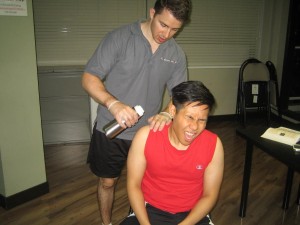A blister is basically a small-sized pouch that contains fluid that develops in the exterior skin layer. It typically forms once the outer layer of the skin is damaged. Fluid accumulates beneath the damaged skin, cushioning the tissue beneath. Understandably, this protects the tissue from sustaining further damage and allowing it to heal as well.
Most blisters are filled with a translucent fluid called as serum which is leftover blood after the red blood cells and clotting agents were removed. Nevertheless, blisters can also be occupied with pus or blood if they are infected or inflamed. Take note that blisters can develop in any part of the body but most of them are quite common on the feet and hands.
Causes of blisters
Blisters are likely caused by the following:
- Contact with chemicals
- Friction to the skin
- Medical conditions such as impetigo or chicken pox
- Exposure to heat such as from a scald or sunburn
When to consult a doctor

Most cases of blisters typically heal between 3-7 days and do not need medical care. You have to consult a doctor if the individual has blisters that:
- Infected
- Painful
- Keeps coming back
Always bear in mind that a blister that is infected can be filled with green or yellow-colored pus and can be painful, warm to the touch and red in color. Do not ignore this blister since it can lead to secondary impetigo and other complications such as sepsis or cellulitis. It is also recommended to consult a doctor if the blisters develop in unusual locations such as in the within the mouth, eyelids or appear right after a severe sunburn, allergic reaction or scalds and burns as well as exposure to chemicals and other substances.
Treatment for blisters
Most blisters naturally heal and do not need medical care. Once the new skin starts to grow beneath the blister, the body will reabsorb slowly the fluid in the blister and the skin on top will dry out and eventually peel off.
Friction blisters
For blisters caused by friction, the unbroken skin over the blister provides a barrier to infection. You have to keep the skin intact to avoid infection. Instruct the individual not to pop up the blister since it can lead to an infection or even slow down the healing process. The skin will peel off after the skin beneath has fully healed. You can cover small-sized blisters with plaster while the bigger ones can be protected with a dressing or gauze pad. If you want to learn how to deal with blisters and other related injuries, you can enroll in a first aid course.
Burst blisters
In case the blister is open, do not peel off the dead skin on top of the blister. Allow the fluid to drain and cover it with a sterile dressing to protect it from infection until it fully heals. Hydrocolloid dressings can be used since it helps prevent discomfort and promotes healing.
